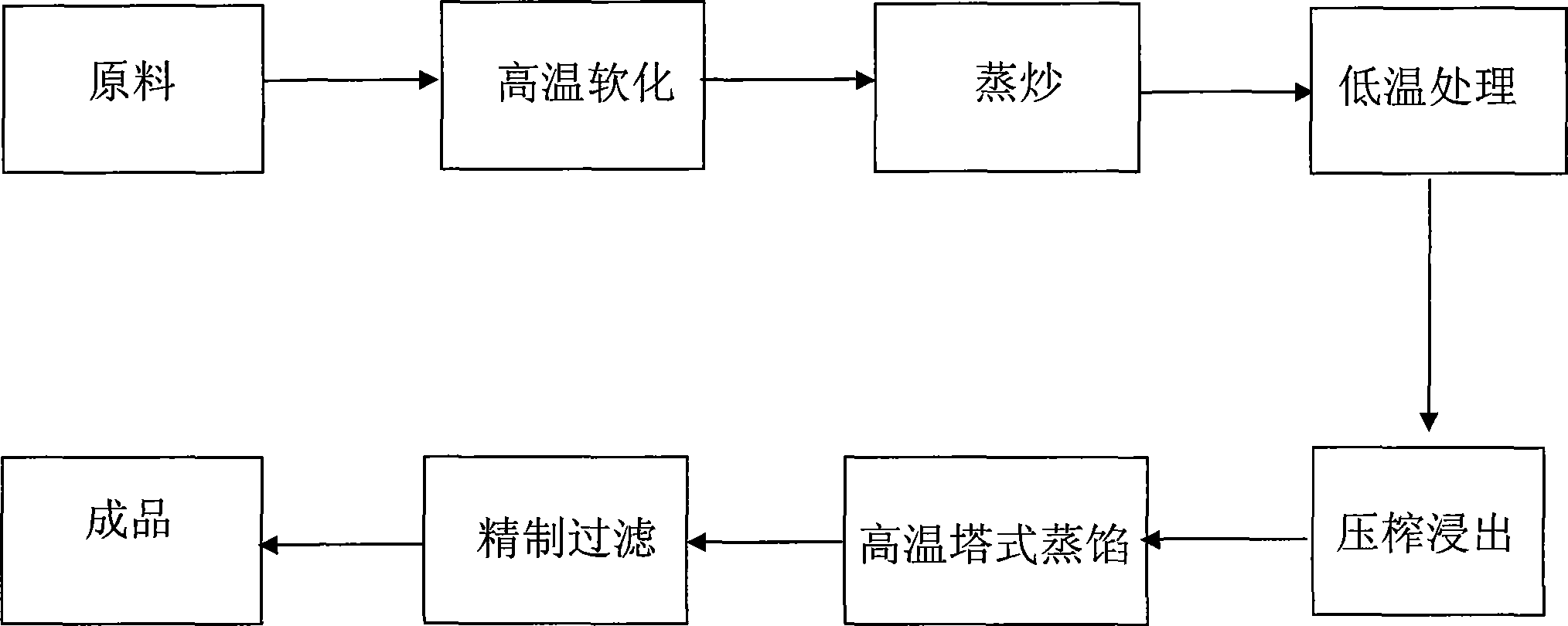Production process of novel environment friendly biological rubber aromatic oil
A production process and technology for aromatic oil, which is applied in the refining field of reformed aromatic oil, can solve the problems of large dosage, deepened color, non-regeneration of white clay, etc., and achieves the effect of wide source and low cost
- Summary
- Abstract
- Description
- Claims
- Application Information
AI Technical Summary
Problems solved by technology
Method used
Image
Examples
Embodiment Construction
[0012] A new type of production process for environmentally friendly bio-rubber aromatic oil, using oil extracted from Lauraceae, Apocynaceae, Asteraceae, Orchidaceae, Cyperaceae, Romoaceae, and plant edible oils as raw materials to produce aromatic oil. It is characterized in that ① first soften the raw materials at high temperature at a temperature of 80°C-200°C; ②steam and fry them in a steamer for 60 minutes; 4. Squeeze and leach through a press to squeeze out the liquid; 5. Treat the obtained liquid at a high temperature in a tower distillation machine at a temperature of 280°C. 6. Finally, refine and filter in a filter to obtain aromatic oil.
[0013] The vegetable edible oil extracted oil is a mixture of cottonseed oil and rapeseed oil, and its weight ratio is 1.5:1.
[0014] The weight ratio of Lauraceae, Apocynaceae, Asteraceae, Orchidaceae, Cyperaceae and Romoaceae is 1.5:1.5:1.5:1:1:1.
[0015] The ratio of family to vegetable edible oil is 2:1.
[0016] Use any m...
PUM
 Login to View More
Login to View More Abstract
Description
Claims
Application Information
 Login to View More
Login to View More - R&D
- Intellectual Property
- Life Sciences
- Materials
- Tech Scout
- Unparalleled Data Quality
- Higher Quality Content
- 60% Fewer Hallucinations
Browse by: Latest US Patents, China's latest patents, Technical Efficacy Thesaurus, Application Domain, Technology Topic, Popular Technical Reports.
© 2025 PatSnap. All rights reserved.Legal|Privacy policy|Modern Slavery Act Transparency Statement|Sitemap|About US| Contact US: help@patsnap.com

